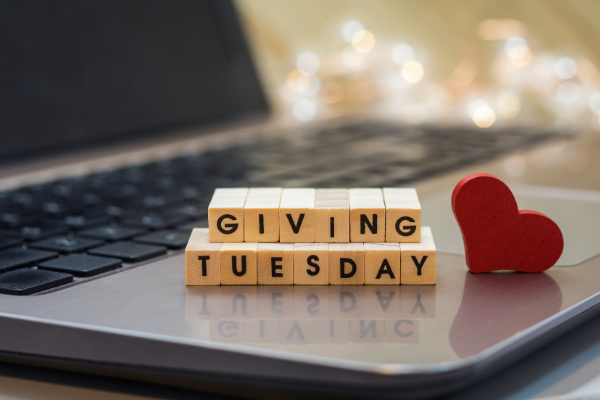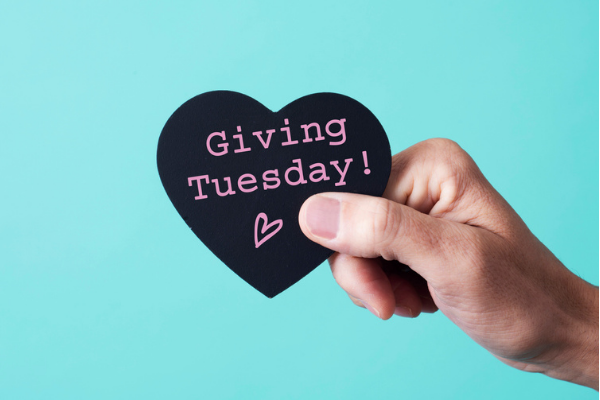Insights
INSIGHTS
All Topics
My Account
The best Giving Tuesday campaigns from May 2020
19 Nov 2020by Chloe Green
As we get closer to Giving Tuesday, we look back at the most successful campaigns from the last edition and examine what lessons charities can learn
#GivingTuesday started in 2012 as a charitable answer to the consumer excess of Black Friday, and has since inspired millions of people around the world to donate money, volunteer their time and give their voice to causes they care about.
The event is based around encouraging individuals, organisations and communities to give as much as they can for just one day of the year.
Any charity can get involved, leaning strongly on social media to spread the word. In 2019, Giving Tuesday raised an estimated £14.2m for UK charities just on the day alone.
#GivingTuesday gets a second outing
While this year’s Giving Tuesday takes place on 1st December, 2020 has been special in that there are not one, but two Giving Tuesdays.
A second date was added on May 5th, dubbed #GivingTuesdayNow, as an emergency response to the COVID-19 crisis.
#GivingTuesdayNow saw activity in more than 145 countries, with the focus extending beyond simple fundraising to local COVID-19 related activities such as advocating for essential workers and combating loneliness by reaching out to others during times of separation.
Much like the main Giving Tuesday in December, #GivingTuesdayNow helped boost existing campaigns and provided a launchpad for new initiates. While the majority of community projects for this initiative happened in the US and Canada, there were activities taking place around the world.
Charities looking for ideas on how to get started with their upcoming Giving Tuesday efforts might find inspiration from some of the great stories from May of spur-of-the-moment campaigns that achieved a lot for their local communities and grass-roots causes.
Let’s take a quick look back on May’s #GivingTuesdayNow and what some of the campaigns achieved:
Nationwide giving
One example of a National campaign for #GivingTuesdayNow is Slovakia’s ‘give 5 on 5’ campaign.
This initiative encouraged its 5.5m citizens to offer donations and carry out fundraising activities around the theme of five.
People were sponsored to do 55 push-ups, practise piano for 5.5 hours, learn 55 words of sign language, and challenge friends to write down 55 things they liked about themselves to encourage good mental health. This same approach—give 5 on May 5—was also adopted by Colombia and Uruguay.
Giving Tuesday Australia launched an ’ovation across the nation’ - thanking frontline staff for helping throughout the crisis. They’ve extended their campaign to make sure the generosity conversation continues, rolling out a digital ’Generosity Register’ with details about organisations and causes that Australians can give to.
Country-wide initiatives like these now exist in 70 countries, with Spanish-speaking and German-speaking countries even getting together to create assets for their prospective audiences, showing the power of collaborative effort.
Together while apart
Despite not being able to work face to face through the pandemic, charities and philanthropy organisations across North America came together to support local causes using innovative digital means, showing that physical distance is no barrier to working together and running creative campaigns.
I Live Here I Give Here in Austin, Texas, held a virtual giving event that saw over 140 emerging
philanthropists hear from local influencers and community leaders sharing their personal giving
stories. They launched mentorships and partnered with local businesses to use their shopfronts to celebrate charity causes.
Hispanics in Philanthropy used their unique bilingual crowdfunding platform HIPGive to distribute match funds, as well as holding a virtual concert to support frontline farmworkers.
There were also lots of examples of video being used imaginatively. Charity cosplaying group Avengers of New York made a collaborative video to thank essential workers and created inspirational social media challenges for young people to take part and show their generosity.
Leaders from GivingTuesdaySpark, the children’s branch of the Giving Tuesday partnership, came together to create inspirational videos for TikTok, encouraging people to do the right thing during the pandemic, such as not hoarding toilet paper, and helping young people to feel less isolated through a special dance challenge.
It was also the first time that the team from Giving Tuesday hosted a livestream event, as a channel to highlight different campaigns from around the world and in different non-profit sectors such as military and youth charities. The livestream brought onboard celebrities and philanthropic leaders, and showcased video clips from social media and campaign results, complemented by live data analysis of the social conversation trends of the day.
Rapid response
These are just a few of the activities and campaigns that happened and are continuing to happen, for #GivingTuesdayNow.
All of it was planned and organised in less the month. The day showed the power of creativity, collaboration and innovation in rapidly mobilising people and accelerating the work of organisations, with a huge boost from the use of digital platforms.
If you’re looking for more information on how to kick start your efforts for the 1st December we recommend our recent article ’How to prepare for GivingTuesday 2020’.
07 Mar 2025by Ioan Marc Jones
A-Z incredible fundraising ideas for charity
07 Mar 2025by Ioan Marc Jones
An A-Z glossary of service delivery terms and definitions
Our Events
Charity Digital Academy
Our courses aim, in just three hours, to enhance soft skills and hard skills, boost your knowledge of finance and artificial intelligence, and supercharge your digital capabilities. Check out some of the incredible options by clicking here.

















